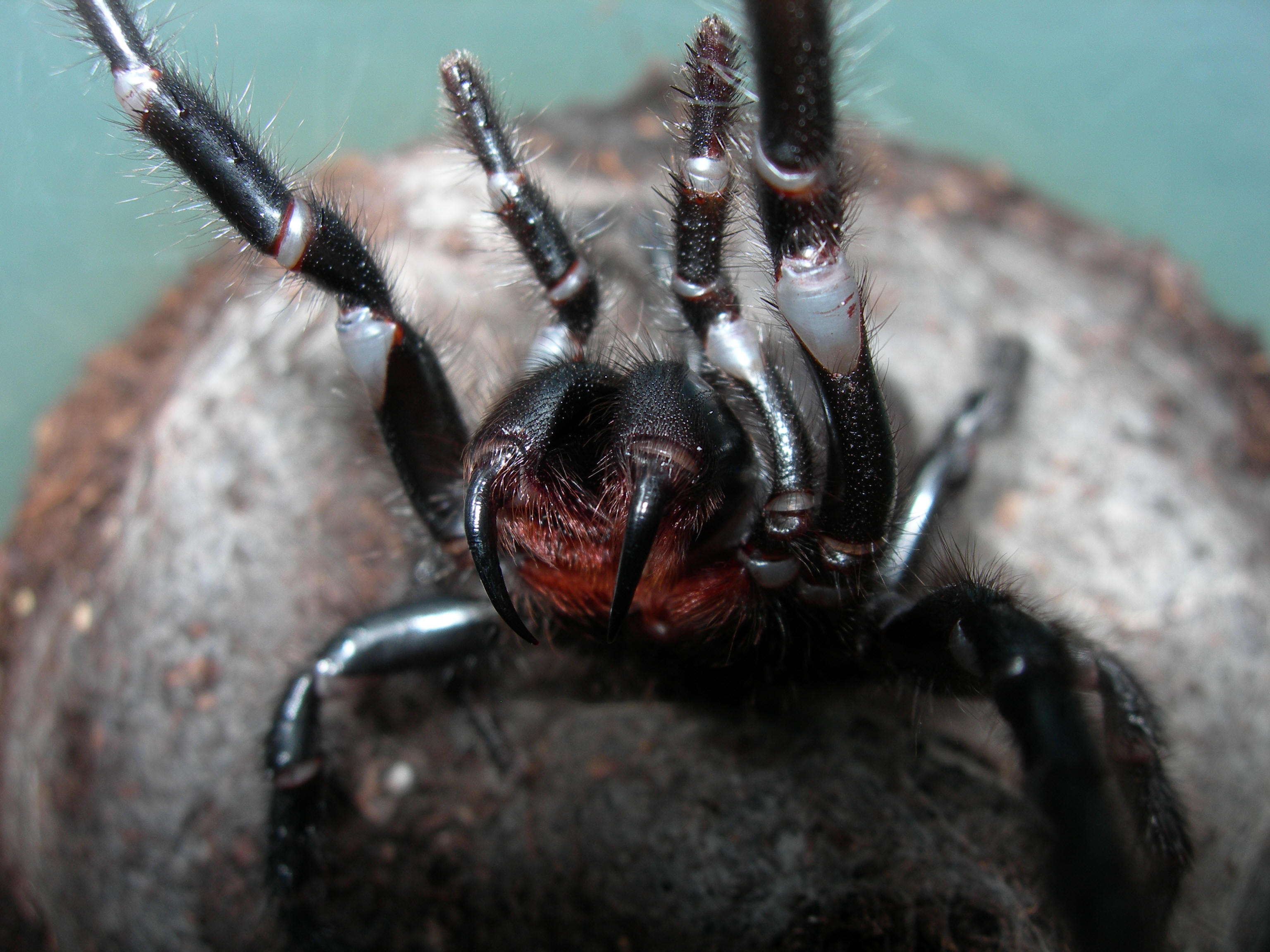| Nutrition |
04/25/08 |

According to Reptile Park.com, the Sydney Funnel-web's diet consists mostly of insects, but it'll eat prey items as large as frogs and lizards! It captures its prey not by waiting around for something to become trapped in a web, but by aggressively attacking a prey item and immobilizing it with its massive fangs and a nasty venom comprised mainly of a substance known as Atraxotoxin. (ThinkQuest.org) The Sydney Funnel-web accomplishes this by waiting in its silk-lined burrow until a prey item stumbles onto one of the trip wires that radiate out from the openings. Once this happens, the spider quickly crawls out of the hole, grabs its victim with its front legs, stabs it with its fangs, injecting venom to immobilize it, and then drags it back into its burrow where it is consumed. (Foelix 164, SpeciesBank) As you might recall from the Classification page, spiders have no moving mouth parts. (Savory 164) Because of this, they cannot chew their food, and must digest it another way. They do this by vomiting digestive juices from their intestinal tract onto their immobilized prey, which liquefy the prey item for ingestion by the spider. The spider repeats this process many times, sucking up small portions of the prey until it is completely consumed. (Foelix 38) Once the externally digested food is taken in by the spider, it is transported via an open circulatory system as with all insects. (Foelix 53) The nutrients are carried by hemocytes in the spider's hemolymph. Like the red cells, or hemoglobin, in your blood, the hemocytes of a spider's hemolymph are charged with nutrient transport. Unlike your hemoglobin, however, hemocytes function in blood clotting, wound healing, and defense against infections. (Foelix 57) The open circulatory system of a spider contains many distinct arteries which originate at the heart and spread throughout the body. (Foelix 53) The arteries extend even to the farthest tips of the legs, where they open and the hemolymph flows freely. Subsequently, the hemolymph flows down a gradient of decreasing pressure to the book lungs, and is then returned to the heart via the lung veins. (Foelix 54) |
This site was last updated 04/25/08